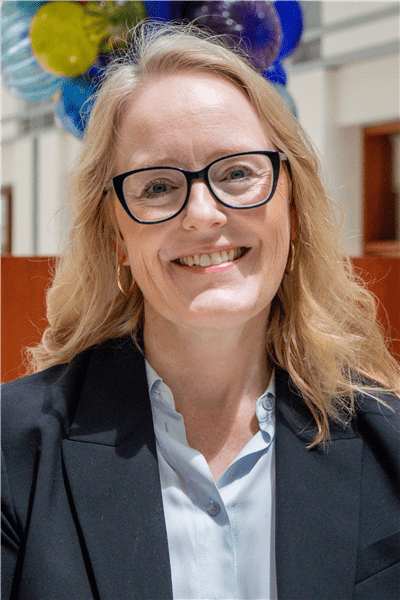
Melissa A. Kacena, PhD
Director, Indiana Center for Musculoskeletal Health
Chancellor's Professor
Edward H. and Yvonne J. Boseker Professor of Orthopeadics
Professor of Orthopaedic Surgery
Adjunct Professor of Anatomy, Cell Biology & Physiology
Adjunct Professor of Biomedical Engineering, School of Engineering and Technology
Vice Chair for Research
- Phone
- (317) 278-3482
- Address
-
MS 5067
ICMH
IN
Indianapolis, IN - PubMed:
-

Bio
Dr. Kacena is Vice Chair for Research and a Professor in the Department of Orthopaedic Surgery at IU School of Medicine. She received her Ph.D. in Aerospace Engineering from the University of Colorado in collaboration with Harvard Medical School and NASA Ames Research Center. She completed her postdoctoral training in Orthopaedics at Yale University School of Medicine, where she was promoted to Assistant Professor before being recruited to IU in 2007.
| Year | Degree | Institution |
|---|---|---|
| 2000 | PhD | University of Colorado |
| 1995 | MS | University of Colorado |
| 1994 | BS | University of Colorado |
The overall research goal of Dr. Kacena's laboratory is to improve the understanding of the interaction of the bone and hematopoietic systems, thereby potentially improving the treatment of metabolic bone disease, hematopoietic disorders, and fracture healing. To achieve this goal, her research program focuses in five areas: 1) The role of megakaryocytes, megakaryocyte growth factors and their receptors in bone homeostasis; 2) Osteoblasts and the hematopoietic stem cell niche; 3) Regulators of osteosarcoma tumor growth; 4) Translational/clinical studies examining the genetic regulation of skeletal homeostasis; and 5) The molecular mechanisms underlying bone repair/fracture healing. Trainees coming through the Kacena lab may learn molecular and cellular bone biology techniques and/or in vivo fracture healing models. Trainees will be trained in many techniques including cell culture, including molecular (e.g., RNA extraction, qPCR, western blotting, serum/media ELISAs), radiographic (e.g., DEXA, pQCT, microCT, planar radiography), histologic (e.g., thin and thick sectioning, staining, IHC, fluorochrome histomorphometry), and biomechanical (e.g., whole bone mechanical properties).
Desc: Research Laboratory Excellence
Scope: School
Date: 2025-09-01